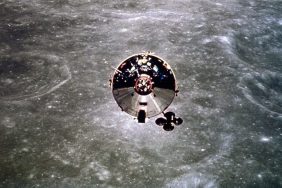Image Credit: NASA / Getty Images
After yesterday’s incredible revelation that NASA has discovered liquid water on Mars, the space organization took to Reddit in order to conduct an Ask Me Anything (AMA) session with the site’s users, answering any and all questions regarding their new discovery.
The discovery was made using data from the Mars Reconnaissance Orbiter, with it being learned that during the planet’s summer months, water flows down crater walls and through canyons, meaning that the chances of there being life on Mars have been raised significantly. Not only that, but it also increases the chances of future scientists being able to colonize the planet.
In the AMA session, the missions’s project scientist Rich Zurek and deputy project scientist Leslie K. Tamppari answered questions fielded by Reddit users from NASA’s Jet Propulsion Laboratory in Pasadena, California. Here are the highlights from the Q&A session:
What will the next generation of robots we send to Mars look like?
We are planning to send the InSight lander to Mars in 2016, which will be lander designed to detect Mars-quakes. We also have a rover in development for the 2020s (same basic design as MSL/Curiosity) and NASA is considering the science that might fly on the next Mars orbiter to be launched sometime after the 2020 rover.
The instruments that are chosen to fly are selected because they can accomplish the science goals of the mission, so as the science goals change – with new discoveries – instruments will be proposed and selected accordingly.
What quantity of water are we talking about?
We think this is a very small amount of water — maybe just enough to wet the top layer of the surface of Mars. The streaks are ~4-5 meters wide and ~200-300 meters long.
How long into the future do you think it will be before we can realistically think about sending humans to Mars?
Presently, NASA is looking into the possibility of sending humans to the vicinity of Mars in the early 2030s. In this scenario, the earliest humans to the surface would be in the late 2030s.
Also See: From Apple I to iPhone 6s: A History of Apple Products
The rover can’t approach specific areas (including where the streaks are located) due to risk of infection by Earth microbes. What are some examples of microbes that could be living on the rover that you are concerned with infecting the surface of mars?
These features are on steep slopes, so our present rovers would not be able to climb up to them. Because liquid water appears to be present, these regions are considered special regions where we have to take extra precautions to prevent contamination by earth life. Our current rovers have not been sterilized to the degree needed to go to an area where liquid water may be present.
What’s the next step?
The next step is to look for more locations where brine flows may occur. We have covered 3% of Mars at resolutions high enough to see these features.

NASA making their major announcement. (Image Credit: Win McNamee / Getty Images)
It was shown back in 2011 that salt water flows may be a seasonal occurrence. What was the final proof for the team that this was happening, and what was your initial reaction to the data?
With MRO, we were able to observe a few of these sites at various points within the Mars year, and again the next year. Over time, we saw that the streaks darkened and lengthened during the warm season and faded during the cold season. A benefit of having MRO lasting so long is that we’re able to see changes and patterns over time.
My reaction? This is all very exciting! The closer we look at Mars, the more interesting it gets.
Could there be Martian life in the water since it’s only there at certain times of the year? What might happen to the life when the water disappears?
It’s possible. We know of forms of life that hibernate during dry seasons on Earth. The water that we’re seeing within the RSL (the seasonal dark streaks that we’re seeing on slopes on Mars) is salty. Salty water could be harmful to life.
If the Mars rover were to travel to the site of the briny water, what would be the scientific procedure for determining if that water supports life?
The Curiosity rover does not have life detection instruments. It would look for confirmation that liquid water was present and how long during the day it was liquid.
Is there any evidence of evaporation happening on mars? And do you know where this water came from?
Is there any evidence of evaporation happening on mars? And do you know where this water came from?
What would be the procedure, if life is found on Mars? would the public be made aware? who gets told first?
Information flows to the public very quickly. If one of our missions here at JPL detected life, we’d notify NASA headquarters immediately, who would then follow procedures to notify the US government and the public.
Where does the water come from?
We don’t know where the water in these hydrated salts come from. That is the next mystery to solve! They leading hypotheses are that (1) the salts are sucking up the water from the atmosphere, but you are correct, there isn’t much water in the atmosphere, and (2) that the water is coming from the subsurface. There is certainly more to learn!
What does this mean in regards to possible life?
We think liquid water is essential for life (at least as we know it.) That does not mean that life is there; but, it’s a good place to look.








